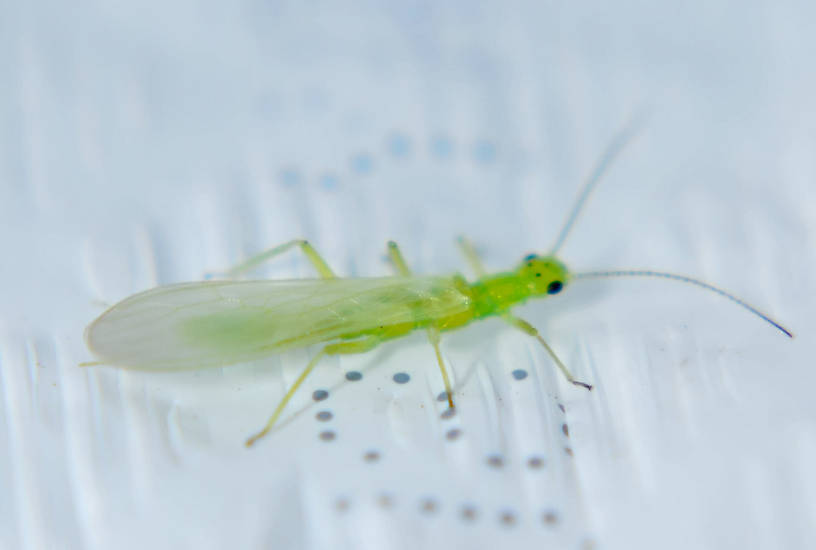
Blue-winged Olives
Baetis
Tiny Baetis mayflies are perhaps the most commonly encountered and imitated by anglers on all American trout streams due to their great abundance, widespread distribution, and trout-friendly emergence habits.


Stonefly Species Alloperla severa (Sallflies)
Where & when
This green species is common.Species Range
Identification
Species ID from GBIFthe Global Biodiversity Information Facility
Source: The Alloperla Severa Complex (Plecoptera: Chloroperlidae) Of Western North America.
Diagnosis. The male of Alloperla severa can be distinguished from the closely related Alloperla thalia by the more elongate and dorsally narrow, bare portion of the epiproct (Figs. 1, 2, 5, 7). In lateral view, the epiproct of Alloperla severa is more beak-like, with the apex dipping down beyond the ventral aspect, and the basal portion about ½ of the length of the epiproct (Figs. 3, 4, 6, 8). The epiproct of the closely related Alloperla thalia in lateral view, slopes to the apex or is almost hood-like, the bare portion being about 1 / 3 of the total epiproct length (Figs. 19, 20, 22, 23).
The females of Alloperla severa and Alloperla thalia cannot be reliably distinguished, other than by geographical proximity, or with the presence of associated males.
Physical description
Most physical descriptions on Troutnut are direct or slightly edited quotes from the original scientific sources describing or updating the species, although there may be errors in copying them to this website. Such descriptions aren't always definitive, because species often turn out to be more variable than the original describers observed. In some cases, only a single specimen was described! However, they are useful starting points.
Description from GBIFthe Global Biodiversity Information Facility
Source: The Alloperla Severa Complex (Plecoptera: Chloroperlidae) Of Western North America.
Male. Macropterous. Length of forewing 7 - 9 mm. General color, lime green in life, dirty white in alcohol. Head and pronotum without black markings. Dorsal aspect of epiproct elongate and narrow, subparallel, slightly broader at base, apex evenly rounded, with shallow crenulations (Figs. 1, 2, 5, 7); surface bare in apical half, clothed with dense appressed setae in basal half (Figs. 1 - 8); beak-like in lateral view (Figs. 3, 4, 6, 8). Stem clothed with fine setae (Figs. 1,5,7).
Female. Length of wings 8 - 11 mm. Subgenital plate triangular, apex more acute, margin usually reaching to center or beyond sternum 9 (Lyon & Stark 1997, Fig. 43).
Specimens of the Stonefly Species Alloperla severa
1 Adult

Start a Discussion of Alloperla severa
References
- Jacobus, L. M., Wiersema, N.A., and Webb, J.M. 2014. Identification of Far Northern and Western North American Mayfly Larvae (Insecta: Ephemeroptera), North of Mexico; Version 2. Joint Aquatic Science meeting, Portland, OR. Unpublished workshop manual. 1-176.
- Swisher, Doug and Carl Richards. 2000. Selective Trout. The Lyons Press.
Stonefly Species Alloperla severa (Sallflies)
Species Range
Common Names
Resources
- NatureServe
- Integrated Taxonomic Information System
- Global Biodiversity Information Facility
- Described by Hagen, H.A. (1861) Synopsis of the Neuroptera of North America. With a List of the South American Species. Smithsonian Miscellaneous Collections, 1–347.

